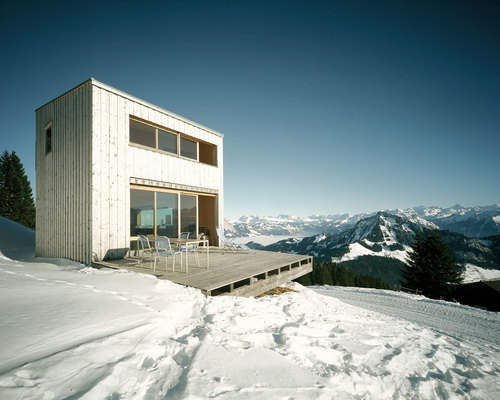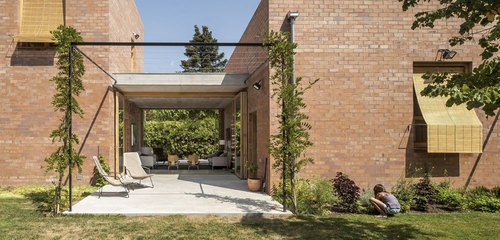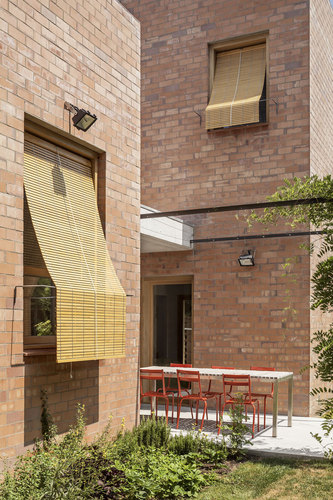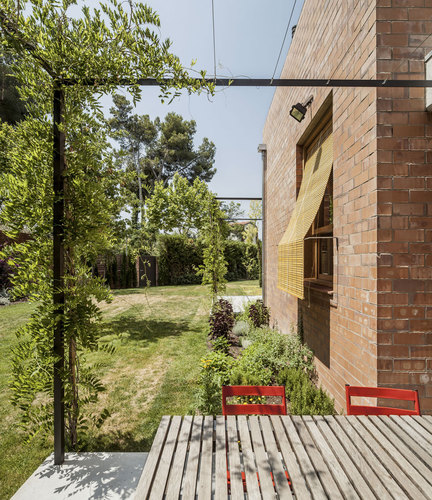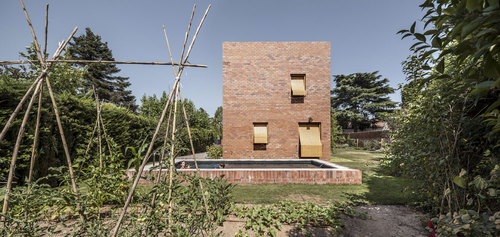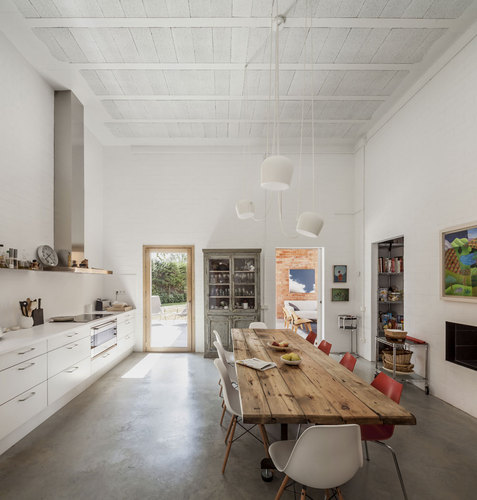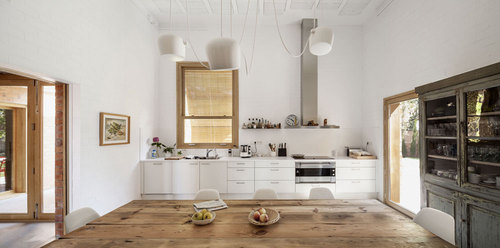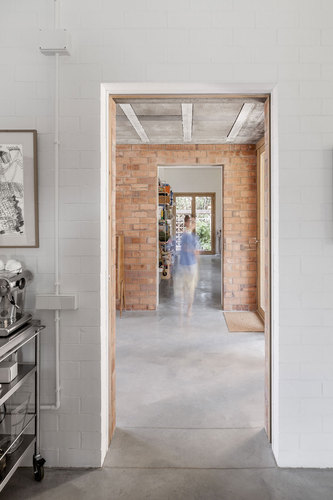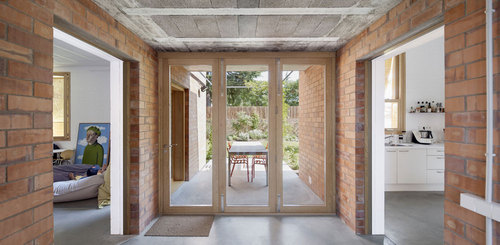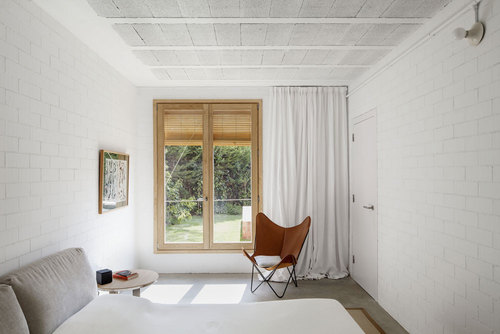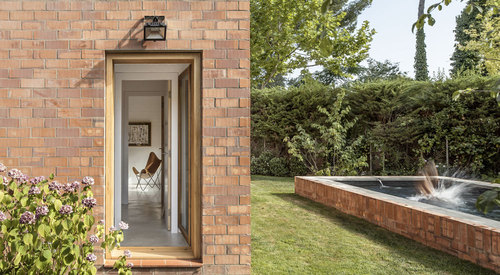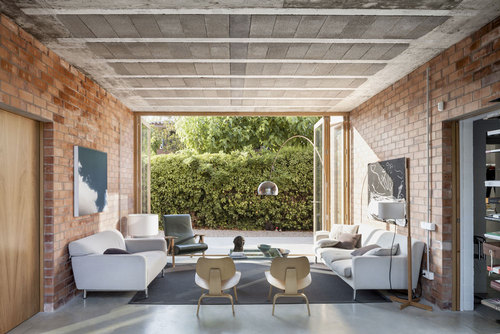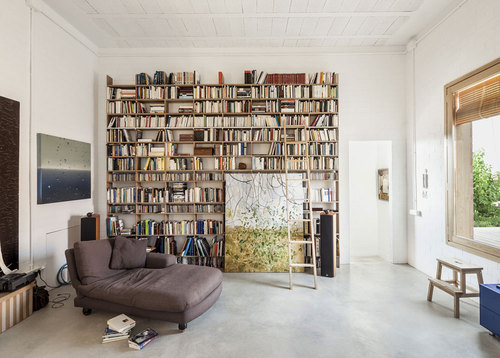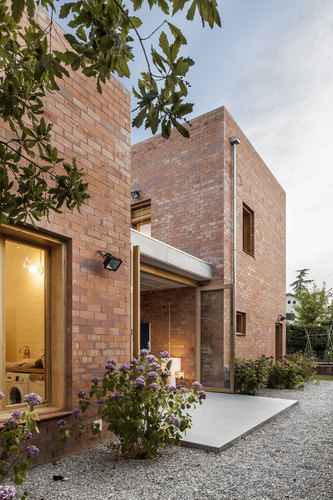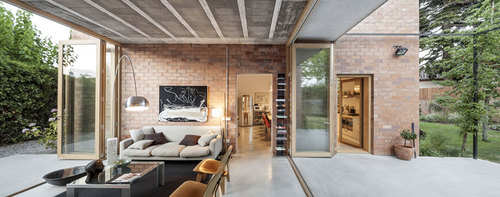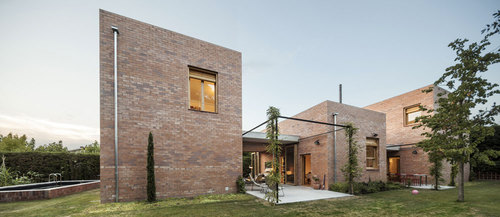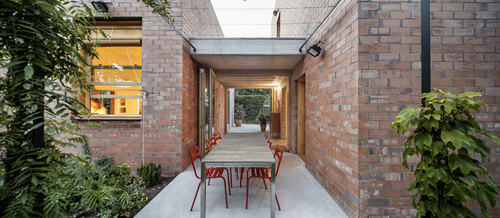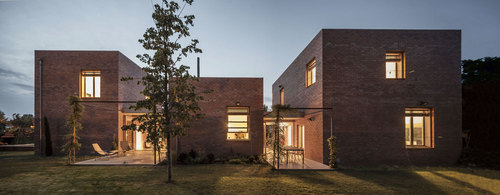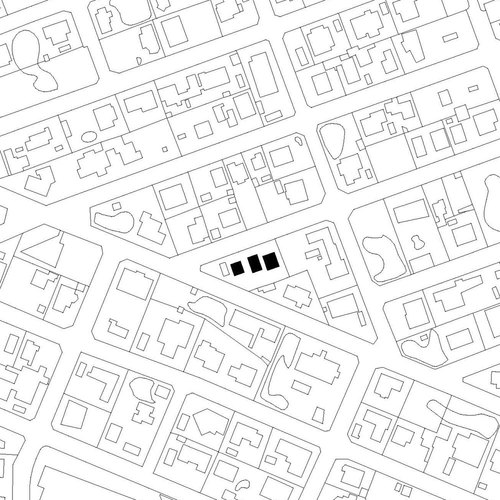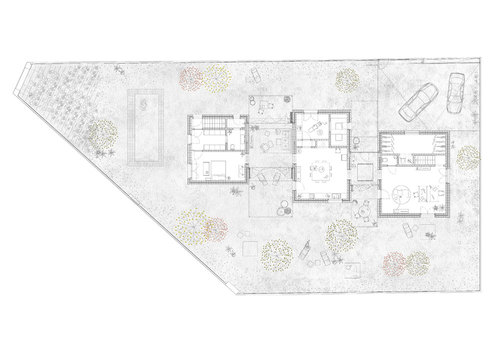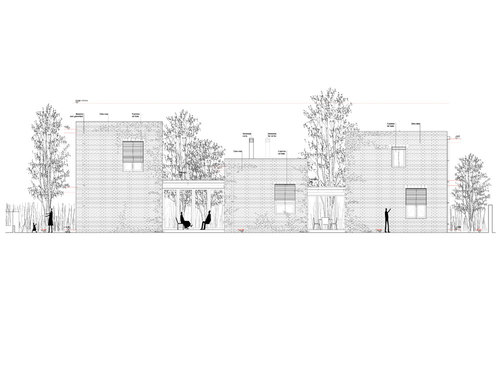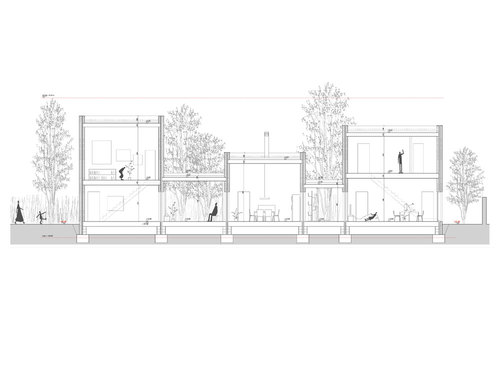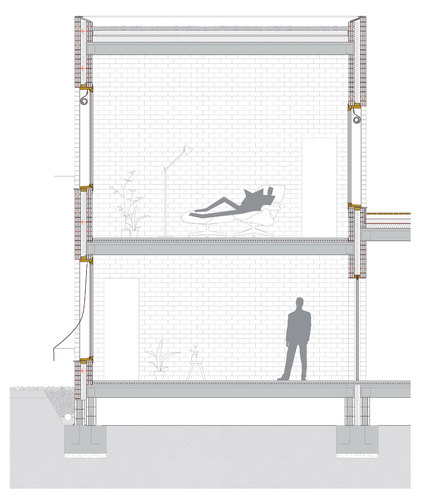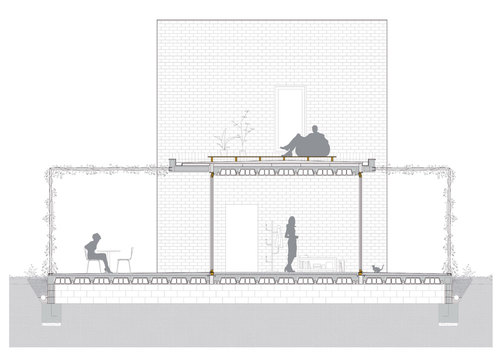La donna (della domenica) è scappata con il cavallo di Nietsche.
Cosa accomuna le Piazze d’Italia di De Chirico con Fruttero & Lucentini in questo appartamento progettato da A.Marcante e A.Testa di UDA architetti affacciato su piazza San Carlo attraverso gli oculi strabici del piano ammezzato di un palazzo della piacentiniana via Roma a Torino?
Di certo li accomuna una sorta di “oscenità”, ovvero disvelare/nascondere il sostrato della realta disseminata di indizi come una trama di un racconto giallo: commistione di alto e basso, dramma e grottesco, banale e sofisticato, inquietante e rassicurante, che talvolta collassa e precipita come una soluzione chimica disvelandoci il sottile gioco delle risonanze.
Noi, per caratteristiche fisiologiche, non possiamo vedere contemporaneamente di fronte e ciò che è alle nostre spalle. I limiti del campo visivo ci accomunano a tutti gli esseri viventi, ma a differenza da tutti gli altri, l’uomo ne è l’unico consapevole.
![Uda — Uno Sguardo (in)Discreto Uda — Uno Sguardo (in)Discreto]()
© Carola Ripamonti . Published on February 13, 2014.
Forse è da ciò che ad un livello profondo, inconscio, trae anche origine l’inquietudine, il dubbio, l’interrogarsi circa la consistenza e l’esistenza stessa della realtà visibile.
Un po’ forzosamente, è come se tutto il domandarsi da parte dell’uomo circa l’oggettività del mondo si potesse ricondurre semplicemente alla mancanza di un “terzo occhio”, posto sulla nuca, che ci consentirebbe di avere una piena percezione. Di qui l’inquietudine della visione e dei luoghi percepiti tramite essa.
![Uda — Uno Sguardo (in)Discreto Uda — Uno Sguardo (in)Discreto]()
© Carola Ripamonti . Published on February 13, 2014.
E’ certo una provocazione quanto sopra, ma se pensiamo a come una “visione altra” sia stata elaborata dal cinema ad esempio ( gli occhi dell’assassino che vedono la scena del crimine, lo sguardo di un altro soggetto che si interpone tra noi ed il protagonista della storia, il miraggio di realtà multiple contemporanee, ecc), allora la questione esce dalla sfera delle suggestioni più intellettuali e si fa pane quotidiano del nostro vivere dentro la realtà ed in particolare negli spazi costruiti dall’uomo.
![Uda — Uno Sguardo (in)Discreto Uda — Uno Sguardo (in)Discreto]()
© Carola Ripamonti . Published on February 13, 2014.
Un appartamento realizzato al piano ammezzato di un palazzo affacciato sulla piazza simbolo di Torino, quella piazza San Carlo voluta dai duchi di Savoia ed in particolare da Maria Cristina di Francia che governò in reggenza come “Madama Reale” nella prima metà del seicento, diviene, tramite i suoi spazi e gli arredi in esso disposti, il teatro aggiornato ai nostri tempi di una rappresentazione di una certa idea della casa borghese, della casa del ceto medio professionale torinese, fatta di rassicurante precisione ingegneresca e sottili inquietudini.
La pianta caratterizzata da una progressione ad imbuto dal retro fino al salone affacciato sulla piazza, le finestre aperte sulla stessa, connotate dalla forma e dalla dimensione degli “oculi” sulle facciate dei palazzi che ne definiscono il perimetro, la necessità di organizzare gli spazi di relazione delle zone a giorno come aree ed ambienti di maggiore o minore esposizione alla vista dall’esterno diventano gli spunti di partenza per la costruzione di un luogo domestico dal sapore vagamente metafisico.
![Uda — Uno Sguardo (in)Discreto Uda — Uno Sguardo (in)Discreto]()
© Carola Ripamonti . Published on February 13, 2014.
Una metafisica dechirichiana, se si fa propria la sua definizione di questo termine per cui:”la metafisica è quella verità nuova che si cela in ogni oggetto se solo si riesce a vederlo o immaginarlo al di fuori del suo solito contesto”, cosa che vale anche per mobili ed arredi secondo l’artista che infatti diceva: “è già stato osservato più di una volta l’aspetto curioso che riescono ad acquistare letti, armadi, specchiere, divani, tavoli, quando ce li ritroviamo improvvisamente dinnanzi sulla strada, in uno scenario nel quale non siamo abituati a vederli. Tutti questi mobili ci appaiono sotto una luce nuova, raccolti in una strana solitudine: una profonda intimità nasce tra loro”.
Così la casa diventa l’invenzione di un luogo secondo regole precise, come in un romanzo, dove i luoghi in esso inventati sono per implicita adesione dei lettori alla narrazione più“veri” e “reali” dei luoghi esistenti nel mondo reale, così come dei molti luoghi mitici e simbolici creati dall’uomo. Mentre infatti la realtà che percepiamo come oggettiva può essere sempre interpretata diversamente da ognuno di noi, è invece necessario che tutti noi si affidi uno status di immutabilità e certezza alla descrizioni letterarie, pena altrimenti l’impossibilità del racconto stesso.
![Uda — Uno Sguardo (in)Discreto Uda — Uno Sguardo (in)Discreto]()
© Carola Ripamonti . Published on February 13, 2014.
E’ anche questo il caso dell’appartamento in questione. Qui tutti gli elementi: la conformazione delle superfici, gli arredi fissi, i piccoli oggetti e le suppellettili dislocate negli ambienti, raccontano di qualcosa che va oltre la prima apparenza, che si insinua tra le pieghe del vivere quotidiano.
Gli arredi, realizzati come costruzioni isolate che popolano un paesaggio intermedio tra interno ed esterno, creano stupore non perchè appartengano alle categorie dell’insolito e dell’astruso, ma per la loro aria immediatamente familiare ed insieme misteriosa. Una fusione tra ritrovamento e mai visto, tra conosciuto ed ignoto in un delicato equilibrio tra quello che già sappiamo e ci aspettiamo da uno spazio ed il senso di spaesamento che si prova di fronte al nuovo.(www.uda.it)
![Uda — Uno Sguardo (in)Discreto Uda — Uno Sguardo (in)Discreto]()
© Carola Ripamonti . Published on February 13, 2014.
![Uda — Uno Sguardo (in)Discreto Uda — Uno Sguardo (in)Discreto]()
© Carola Ripamonti . Published on February 13, 2014.
![Uda — Uno Sguardo (in)Discreto Uda — Uno Sguardo (in)Discreto]()
© Carola Ripamonti . Published on February 13, 2014.
![Uda — Uno Sguardo (in)Discreto Uda — Uno Sguardo (in)Discreto]()
© Carola Ripamonti . Published on February 13, 2014.
![Uda — Uno Sguardo (in)Discreto Uda — Uno Sguardo (in)Discreto]()
© Carola Ripamonti . Published on February 13, 2014.
![Uda — Uno Sguardo (in)Discreto Uda — Uno Sguardo (in)Discreto]()
© Carola Ripamonti . Published on February 13, 2014.
![Uda — Uno Sguardo (in)Discreto Uda — Uno Sguardo (in)Discreto]()
© Carola Ripamonti . Published on February 13, 2014.
![Uda — Uno Sguardo (in)Discreto Uda — Uno Sguardo (in)Discreto]()
© Carola Ripamonti . Published on February 13, 2014.
![Uda — Uno Sguardo (in)Discreto Uda — Uno Sguardo (in)Discreto]()
© Carola Ripamonti . Published on February 13, 2014.
![Uda — Uno Sguardo (in)Discreto Uda — Uno Sguardo (in)Discreto]()
© Carola Ripamonti . Published on February 13, 2014.
![Uda — Uno Sguardo (in)Discreto Uda — Uno Sguardo (in)Discreto]()
© Carola Ripamonti . Published on February 13, 2014.
![Uda — Uno Sguardo (in)Discreto Uda — Uno Sguardo (in)Discreto]()
© Carola Ripamonti . Published on February 13, 2014.
![Uda — Uno Sguardo (in)Discreto Uda — Uno Sguardo (in)Discreto]()
© Carola Ripamonti . Published on February 13, 2014.
![Uda — Uno Sguardo (in)Discreto Uda — Uno Sguardo (in)Discreto]()
© Carola Ripamonti . Published on February 13, 2014.
![Uda — Uno Sguardo (in)Discreto Uda — Uno Sguardo (in)Discreto]()
© Carola Ripamonti . Published on February 13, 2014.
![Uda — Uno Sguardo (in)Discreto Uda — Uno Sguardo (in)Discreto]()
© Carola Ripamonti . Published on February 13, 2014.
![Uda — Uno Sguardo (in)Discreto Uda — Uno Sguardo (in)Discreto]()
© Carola Ripamonti . Published on February 13, 2014.
![Uda — Uno Sguardo (in)Discreto Uda — Uno Sguardo (in)Discreto]()
© Carola Ripamonti . Published on February 13, 2014.
![Uda — Uno Sguardo (in)Discreto Uda — Uno Sguardo (in)Discreto]()
© Carola Ripamonti . Published on February 13, 2014.
![Uda — Uno Sguardo (in)Discreto Uda — Uno Sguardo (in)Discreto]()
© Uda . Published on February 13, 2014.
![Uda — Uno Sguardo (in)Discreto Uda — Uno Sguardo (in)Discreto]()
© Uda . Published on February 13, 2014.
![Uda — Uno Sguardo (in)Discreto Uda — Uno Sguardo (in)Discreto]()
© Uda . Published on February 13, 2014.













































































































































































































































































